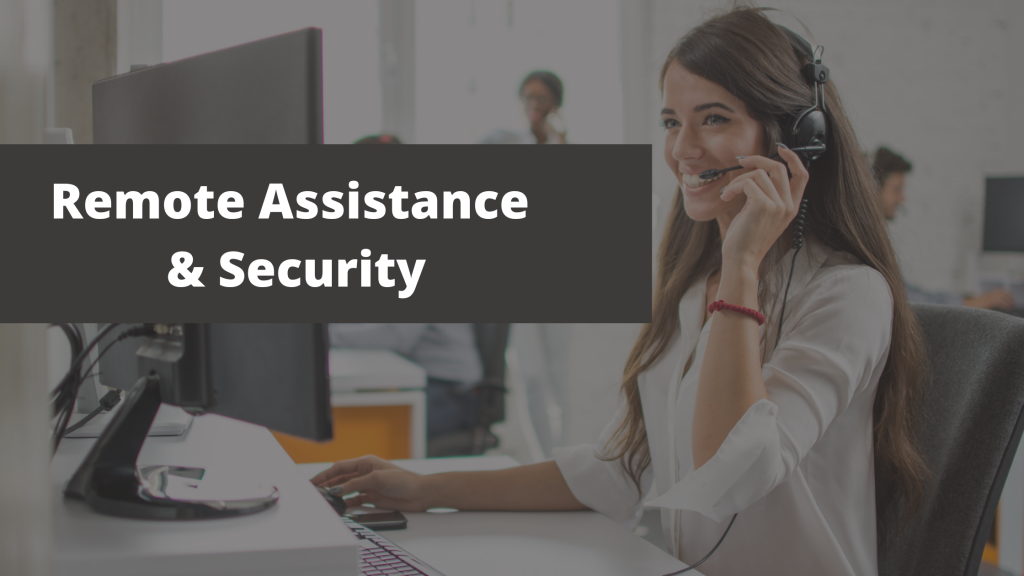Last Updated on January 30, 2023

While conventional remote IT assistance software is super efficient for instant IT support, it can also come with data privacy and security concerns. So how do you create a balance between providing effective tech support and maintaining privacy and security? If you have customers in highly regulated industries such as healthcare, surveillance security, or industries that involve personal data or information this is an even more crucial question. Not addressing it correctly can result in not just in a loss of business reputation but also steep fines from regulatory agencies.
This is why the remote control functionality of remote access software is best used with unattended devices when you need full access because no one is there to assist you or give you feedback. But you can still provide your customers and clients with immediate guidance without being able to see all the data they have on their attended devices.
To ensure a good balance between remote support and privacy and security, you need remote IT support software that allows you to use a variety of tools to give clear instruction without taking total control of your clients’ devices unless they give permission. Clients and customers can be assured of security with features like screen sharing permission, allowing the client to pause screen sharing at anytime, and the recording of every conversation and action in order to provide them with a log of every interaction.
Here are some essential things to look for when choosing remote access software that provides a good balance between effective customer support and advanced security.
Remote assistance vs. remote control: Understanding the differences
Some customers and clients have to be extra cautious about who they allow to access their devices that contain personal data and information. But they also need instant support when tech issues arise. To provide customer support while maintaining a high level of privacy and security, it is important to know the difference between remote control vs. remote support software solutions.
Remote control allows your IT team to completely take control over a device and have full access to all the data on it. This is often best used in situations with unattended devices like point-of-sale (POS) kiosks, digital signage, and vending machines. This allows you to have total access when there is no one near the device to give you help or feedback. In contrast, remote assistance only gives you access once the customer or client gives you permission to do so. A window will pop up on the client’s side specifically requesting that the client allow a screen sharing session.
In addition to screen sharing permissions, your IT team can use a variety of other secure tools to give guidance and instructions. These tools include tutorial gestures, augmented reality (AR) 3D markers, voice chat, voice recording, screenshot editing, and much more. Essentially, remote IT assistance software is best for clients who do not want you to take control of their device, but only receive instructions on how to do specific tasks.
What remote assistance security features to look for
To ensure that your privacy-focused clients and customers are comfortable with the remote IT support you give them, there are a few security features you can look out for when selecting the best remote support software. Make sure you choose a solution that allows your client or customer to pause screen sharing at anytime.
For instance, your client may need to go through a folder with confidential documents or data. While they are doing so the screen can be blacked out so you are not able to see what they are looking at.
Another handy feature is to enable recording of every conversation and action so your customer has a log of everything that happened.
AirDroid Remote Support allows IT teams to request permission to see their client’s shared screen and includes a variety of tools to provide guidance and instructions, such as:
- 9-digit code for quick & secure connection
- No need to sign up for an account
- Tutorial gestures
- Augmented reality (AR) camera
- 3D markers
- Voice and text chat
- Voice recording
- Privacy protection screen sharing
- Screenshot editing
If you need to help your IT technicians visualize remote issues and guide on-site personnel with clear instructions without relying on phone calls or emails, AirDroid Remote Support may be the perfect tool for your business.

Conclusion
Are you assisting clients or customers that need immediate IT support but also have privacy and security concerns? Then you need to make sure that the remote support software solution you use is able to give your customers the peace-of-mind they need. You can do that by giving them more control over how and when you access their devices.
Before you unleash remote assistance software on your customers, sign up for a free trial so your IT team can test all the features out first. Check out a 14-day free trial of AirDroid Remote Support to see if it is right for your customers and business.
[…] customers and clients that are in highly regulated industries may need to be assured that their privacy and security are protected during any interaction. This is especially true for those that manage confidential […]
[…] on whether you need to troubleshoot a physical device or machine, an augmented reality (AR) camera with 3D markers can also help you provide guidance on which button to push or switch to flip (which […]